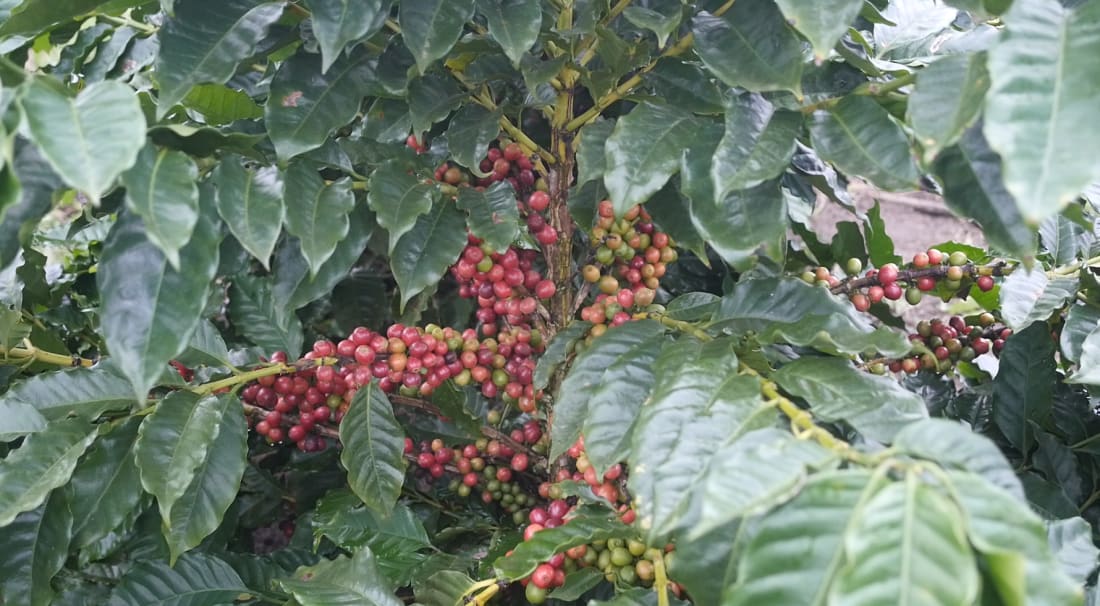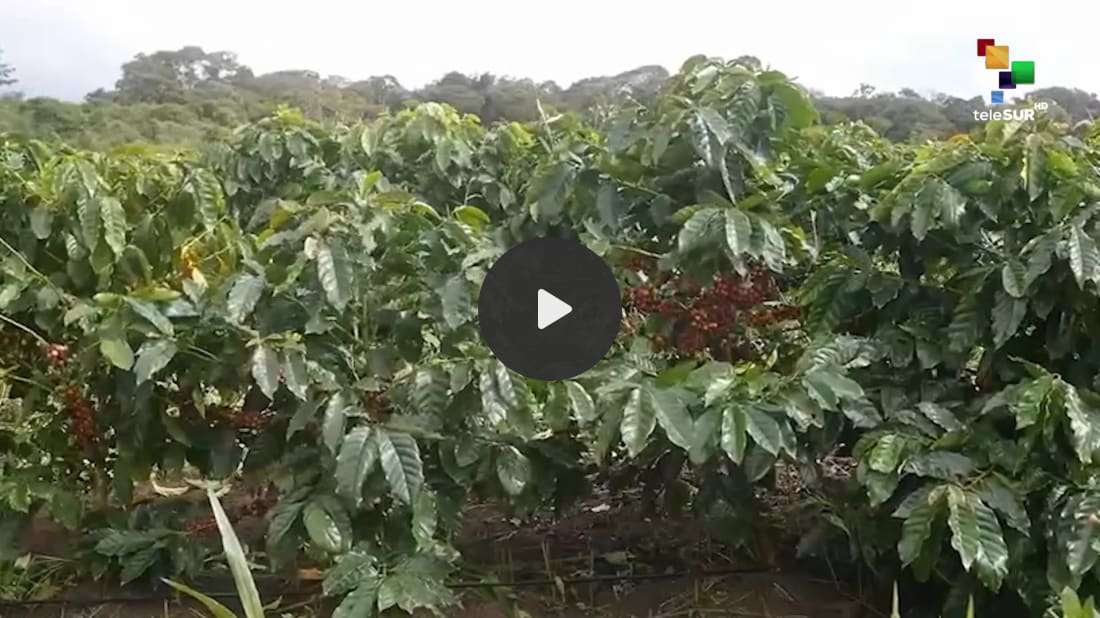
One of 32 varieties of arabica coffee growing at Paraiba Federal University’s coffee research program in Areia, Paraiba.
Brazil is the world’s largest coffee producer. It has been important to its national economy since the 1700s, and today it is Brazil’s largest agricultural export to the United States. Even though it provides around one-third of all coffee drunk in the US, there are reasons to believe that the Trump administration has an inflated opinion of the US’ importance to Brazil’s coffee value chain. Last year, the US was only Brazil’s third-largest coffee consumer, following the EU, which imported around 50% of the coffee grown in Brazil, and Brazil itself, which consumed around 23% of its own coffee. During the last growing season (2024–2025), US imports only represented 16% of production. During that same season, Brazil’s coffee industry earned record profits of $14.7 billion USD, due to a price boom. The record profits were influenced by climate change-related factors, which have led to the price for Brazilian consumers to nearly double over the past few years. Taking factors like these into consideration, there is reason to believe that the value chain has a margin of error to work with, which should be able to partially or totally offset the effects of Trump’s 50% tariff on 16% of its production.
Brazil’s 500-year economic history has been marked by boom and bust commodities cycles, and its coffee industry is no different. As in any other agricultural commodity, mitigating the risks of price crashes is part of the planning process. Brazilian coffee value chain actors have over 200 years of boom and bust cycle experience to gather from when developing their risk mitigation strategies. As the commodity is currently in a boom period, they have been planning for the next bust cycle anyway, regardless of the cause. In other words, even if the domestic and other foreign markets only partially absorb the losses caused by Trump’s tariff on 16% of Brazil’s production, the industry is prepared anyway.
The rebirth of an historic coffee region
Interspersed with remnants of Brazil’s Atlantic rainforest, the hill country in the northeastern state of Paraíba has a microclimate that resembles that of southern Minas Gerais, where most coffee is grown today. During the 1800s, the area grew the most coffee in northeastern Brazil, and boom towns sprang up, like Bananeiras and Areia. However, by the early 1900s, a price crash and fungus outbreak nearly wiped out the industry. In the few areas where coffee plants continued to grow, varieties of arabica were preserved that disappeared in the rest of Brazil. Agricultural engineers from Paraíba Federal University have been working to recuperate these varieties and reintroducing them to local family farmers. Today, the region has become known for the quality of its craft-produced gourmet coffee, produced for the domestic consumer market.
This week I traveled to Areia, Paraíba, to film the following story about the potential ramifications of the US tariffs for “From the South.”
This first appeared on De-Linking Brazil.
The post Trump Tariffs and Brazilian Coffee: What to Expect After August 1 appeared first on CounterPunch.org.

